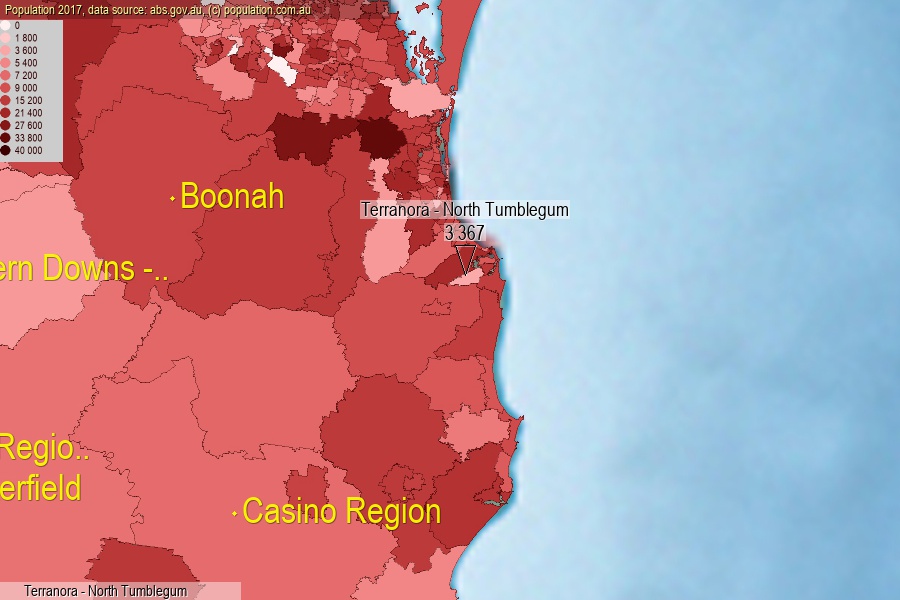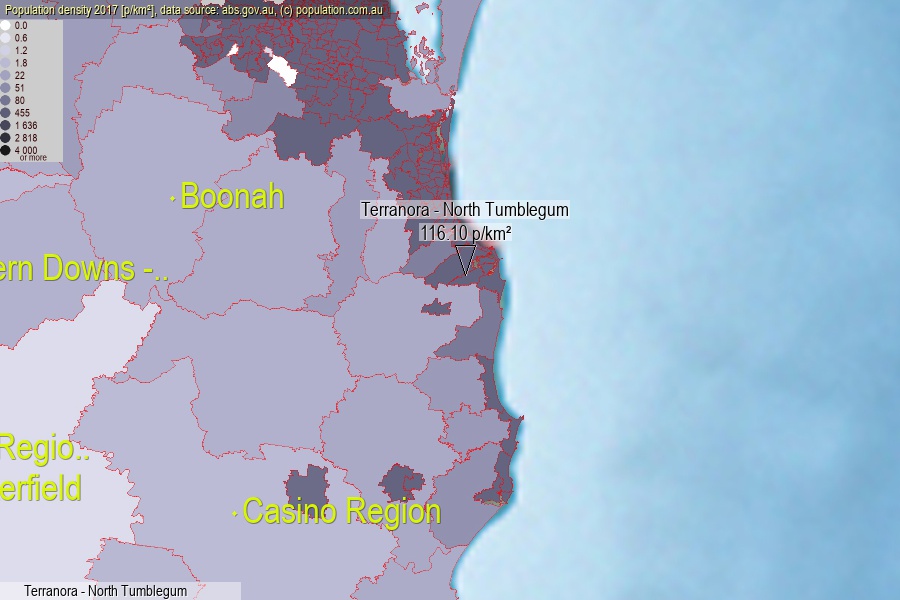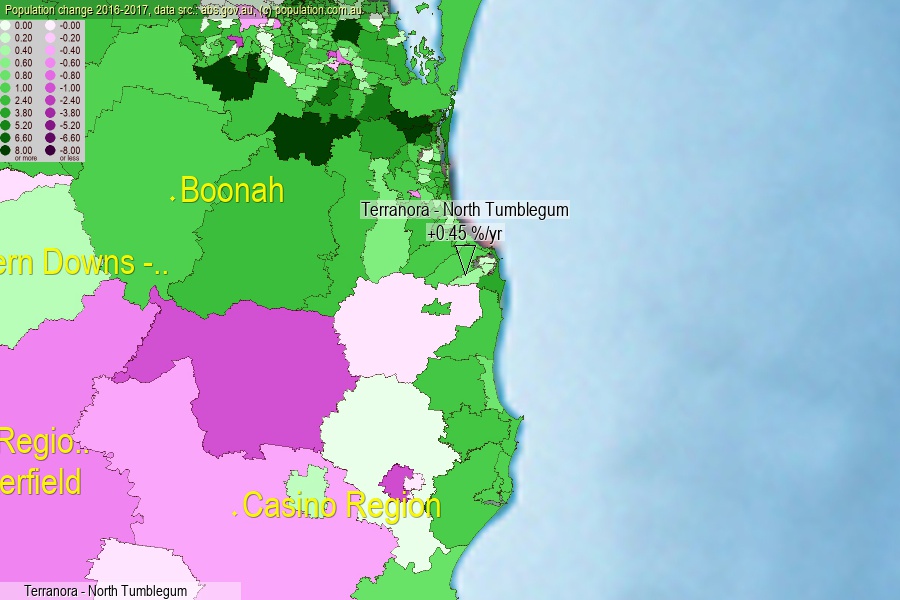 population.com.au
population.com.auLast official estimated population of Terranora - North Tumblegum (as Statistical Area Level 2) was 3 367 people (on 2017-06-30)[2]. This was 0.01% of total Australian population and 0.042% of NSW population. Area of Terranora - North Tumblegum is 29.00 km², in this year population density was 116.10 p/km² . If population growth rate would be same as in period 2016-2017 (+0.45%/yr), Terranora - North Tumblegum population in 2025 would be 3 489. [0]



Click to enlarge. Terranora - North Tumblegum is located in the center of the images.
Population [people], population density [p./km²] and population change [%/year] [2]
View borders » (new window) [4]
[2001-2002] +2.43 %/Yr.
[2002-2003] +2.33 %/Yr.
[2003-2004] +2.28 %/Yr.
[2004-2005] -0.03 %/Yr.
[2005-2006] +0.10 %/Yr.
[2006-2007] +0.84 %/Yr.
[2007-2008] +2.34 %/Yr.
[2008-2009] +1.96 %/Yr.
[2009-2010] +2.12 %/Yr.
[2010-2011] +1.32 %/Yr.
[2011-2012] +0.87 %/Yr.
[2012-2013] +0.43 %/Yr.
[2013-2014] +0.43 %/Yr.
[2014-2015] +0.88 %/Yr.
[2015-2016] +1.30 %/Yr.
[2016-2017] +0.45 %/Yr.
[0] Calculated with linear interpolation from officially estimated population
[1] Read more about SA2 and Australian Statistical Geography Standard (ASGS) on abs.gov.au
[2] Population data from Australian Bureau of Statistics (Population and density: 2017; change: 2016-2017)
[3] Digital Boundaries: Australian Statistical Geography Standard (ASGS) 2016.
[4] Border coordinates are simplifyed using Ramer-Douglas-Peucker algorithm.